CarEdge saved me over 4,500 dollars on a brand new Honda Pilot. I can't say thank you enough.
Price intelligence
Find a wide range of vehicle listings with market insights on new and used listings near you.


Help us personalize your CarEdge experience — it only takes a second.
Your answers help us personalize your CarEdge journey — we’ll follow up with tips and next steps that match your buying timeline.

You don’t have to spend one hundred grand to purchase an electric vehicle with great range in 2022. EVs aren’t cheap, but with fuel savings taken into account, the electric lifestyle starts to sound a lot more appealing. There’s a saying in electric mobility: range is king. That’s especially true for frequent road-trippers and those who live in one of America’s remaining charging deserts. These are the electric vehicles with the most range in 2022.
Note: We’ve decided to place an emphasis on affordable electric vehicles with the most range. Affordability is a moving target in 2022’s crazy auto market, but in the realm of EVs, we’ve defined ‘affordable’ as EVs under $65,000. If you’re in the market for luxury, we’ve got those covered too.
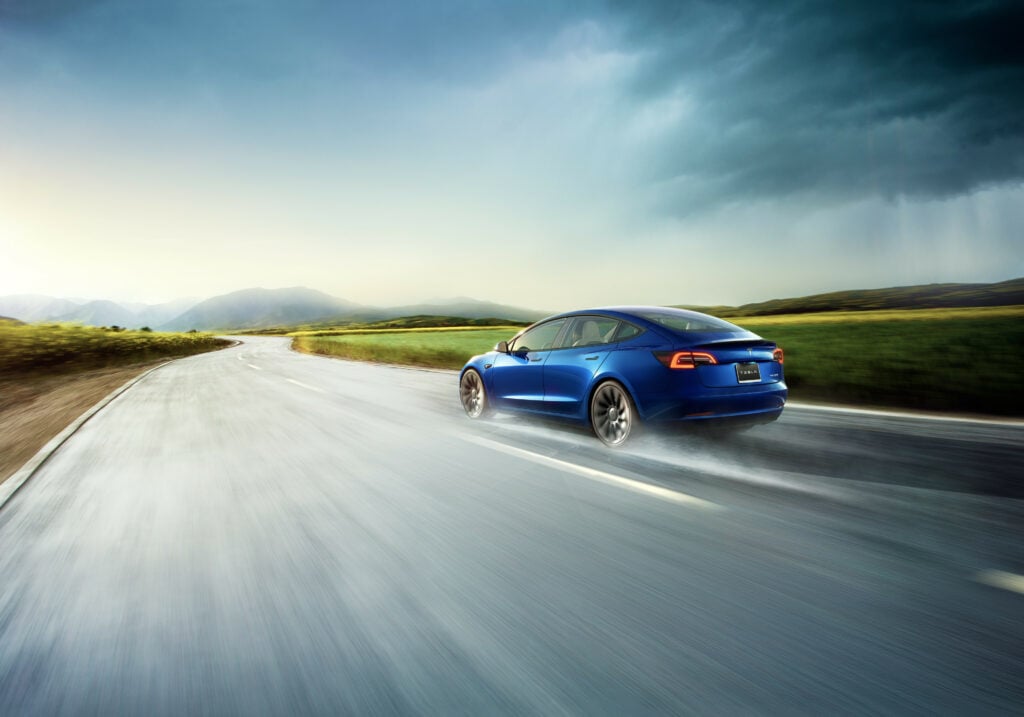
Range: 358 miles
Price: $57,190 with destination
Max charging speed: 250 kW (20-80% in 20 minutes, adding 214 miles of range)
0-60 mph (fun factor):
Federal EV tax credit qualification: No, credits were exhausted. Learn about EV incentives here.
See our full review of the 2022 Tesla Model 3 Long Range here.
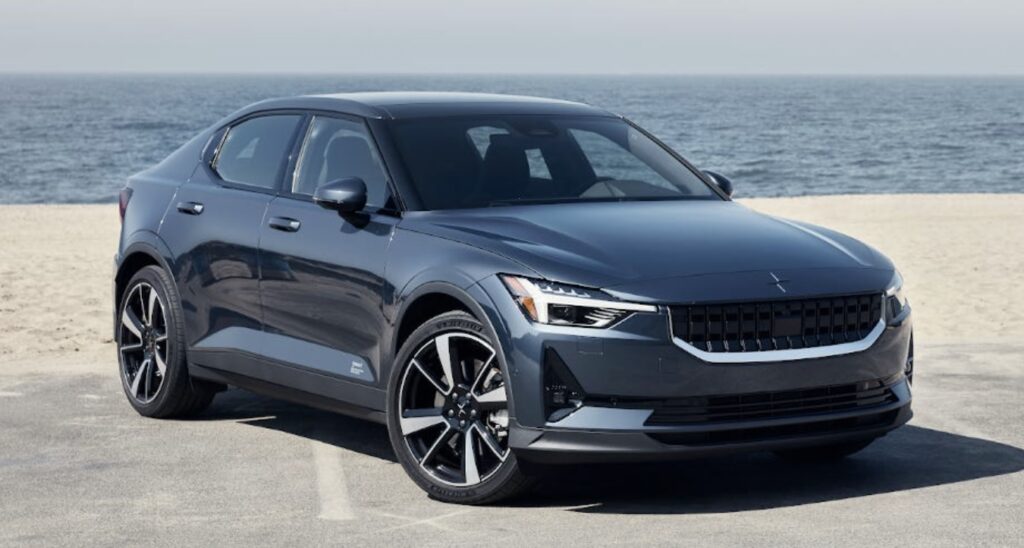
Range: 270 miles
Price: $49,800 with destination
Max charging speed: 250 kW (20-80% in 20 minutes, adding 214 miles of range)
0-60 mph (fun factor): 6.8 seconds
Federal EV tax credit qualification: Yes, learn more about EV incentives here.
See our full review of the Polestar 2 here.
Range: 272 miles
Price: $48,190 with destination
Max charging speed: 150 kW (20-80% in 20 minutes, adding 163 miles of range)
0-60 mph (fun factor): 5.8 seconds
Federal EV tax credit qualification: No, credits were exhausted. Learn about EV incentives here.
See our full review of the 2022 Tesla Model 3 here.
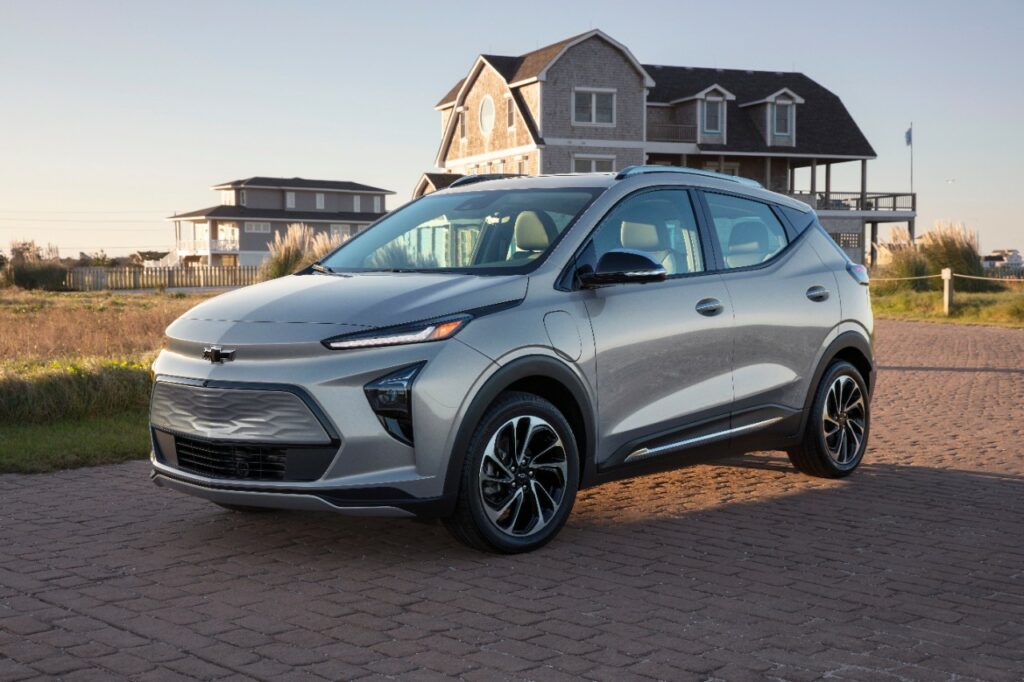
Range: 259 miles
Price: $26,595 with destination (most affordable EV available today)
Max charging speed: 55 kW (adding 100 miles of range in 30 minutes, or 200 miles of range in 75 minutes)
0-60 mph (fun factor): 6.8 seconds
Federal EV tax credit qualification: No, credits were exhausted. Learn about EV incentives here.
See our full review of the Chevrolet Bolt here.
Here’s our list of the cheapest electric cars available today
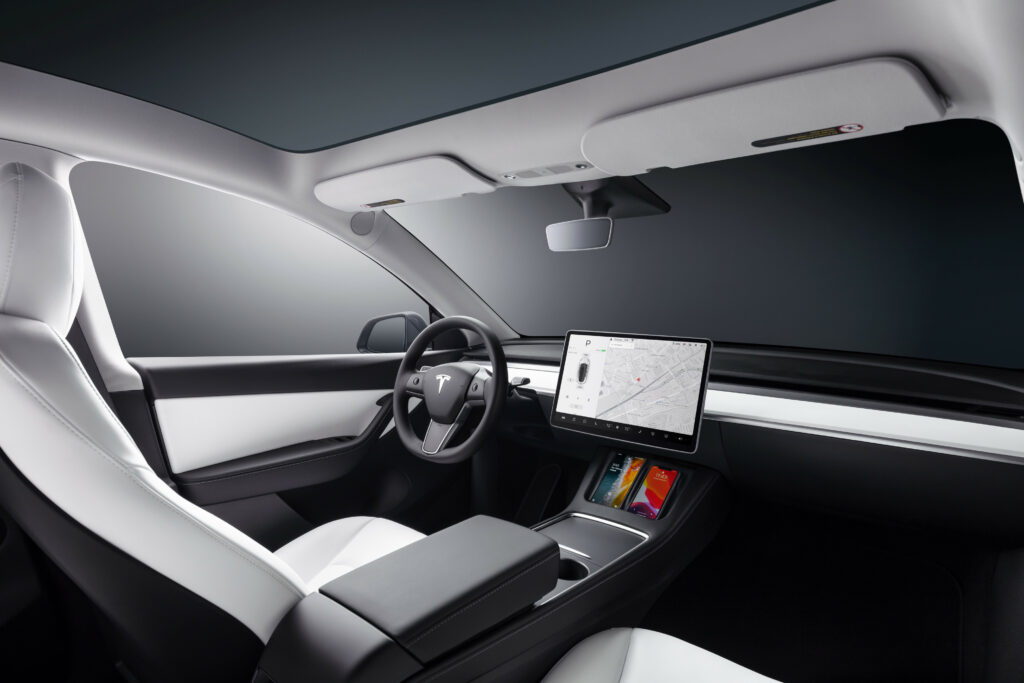
Range: 330 miles
Price: $64,190 with destination
Max charging speed: 250 kW (adding 100 miles of range in 30 minutes, or 200 miles of range in 75 minutes)
0-60 mph (fun factor): 4.8 seconds
Federal EV tax credit qualification: No, credits were exhausted. Learn about EV incentives here.
See our full review of the Tesla Model Y here.
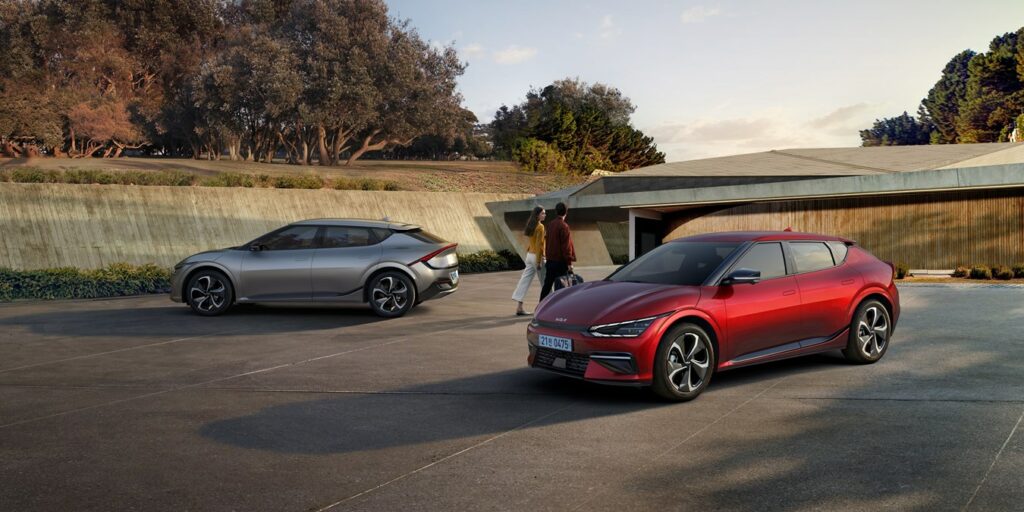
Range: 310 miles
Price: $42,155 with destination
Max charging speed: 235 kW (15-80% in 20 minutes, adding 217 miles of range in 18 minutes)
0-60 mph (fun factor): 7.3 seconds
Federal EV tax credit qualification: Yes, learn more about EV incentives here.
See our full review of the Kia EV6 here.
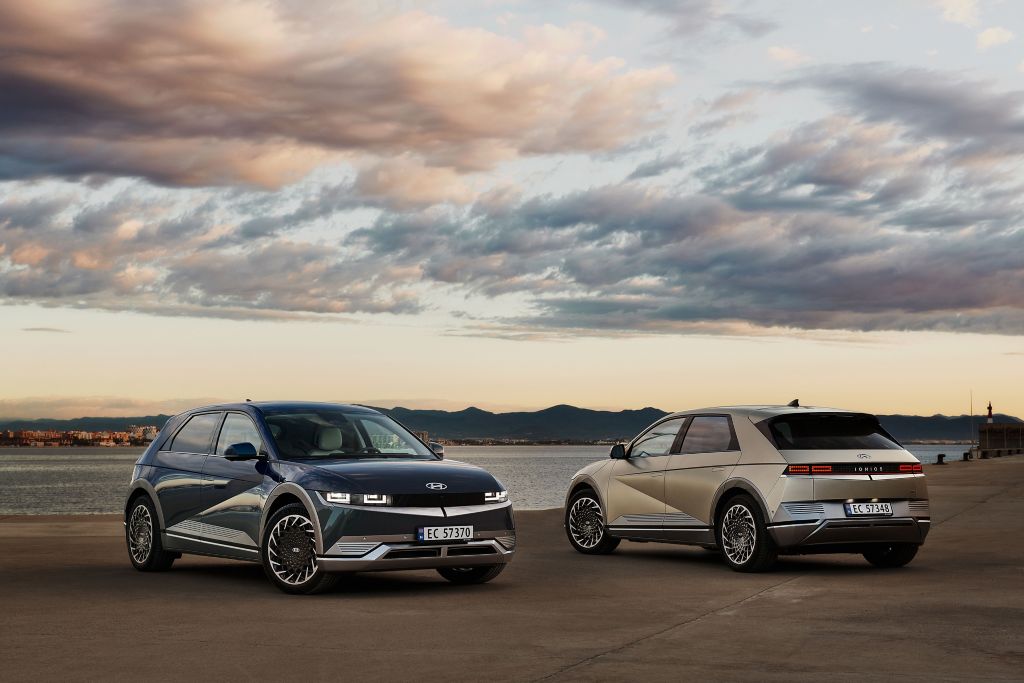
Range: 303 miles
Price: $45,295 with destination
Max charging speed: 235 kW (15-80% in 20 minutes, adding 197 miles of range in 18 minutes)
0-60 mph (fun factor): 7.5 seconds
Federal EV tax credit qualification: Yes, learn more about EV incentives here.
See our full review of the Hyundai IONIQ 5 here.
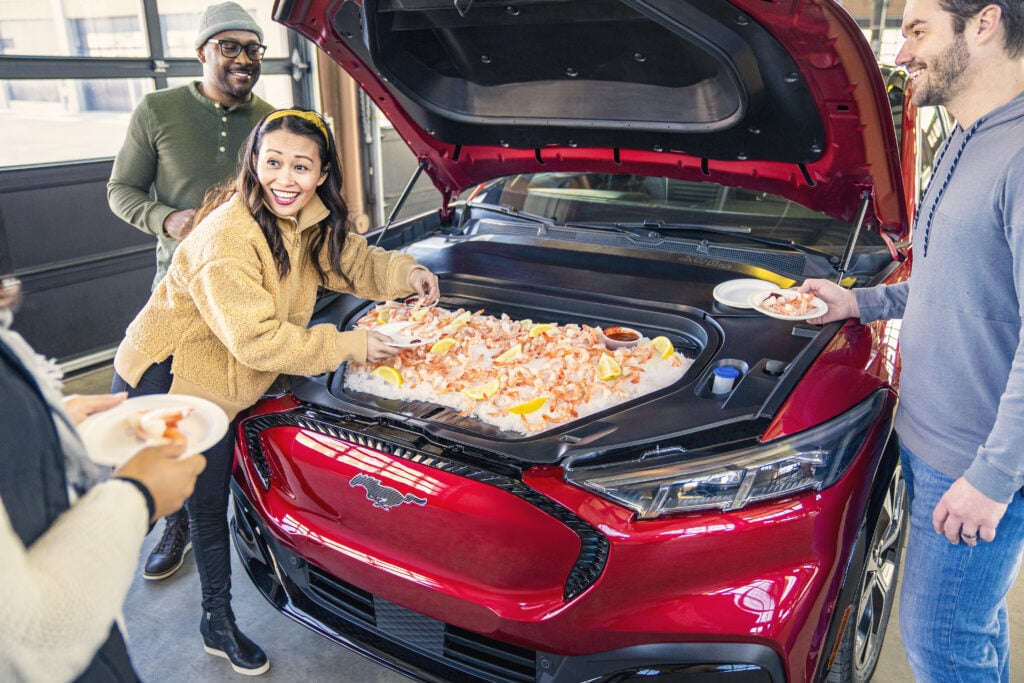
Range: 314 miles
Price: $53,550 with destination
Max charging speed: 150 kW (10-80% in 45 minutes, adding 220 miles of range)
0-60 mph (fun factor): 6.1 seconds
Federal EV tax credit qualification: Yes, learn more about EV incentives here.
See our full review of the Ford Mustang Mach-E here.
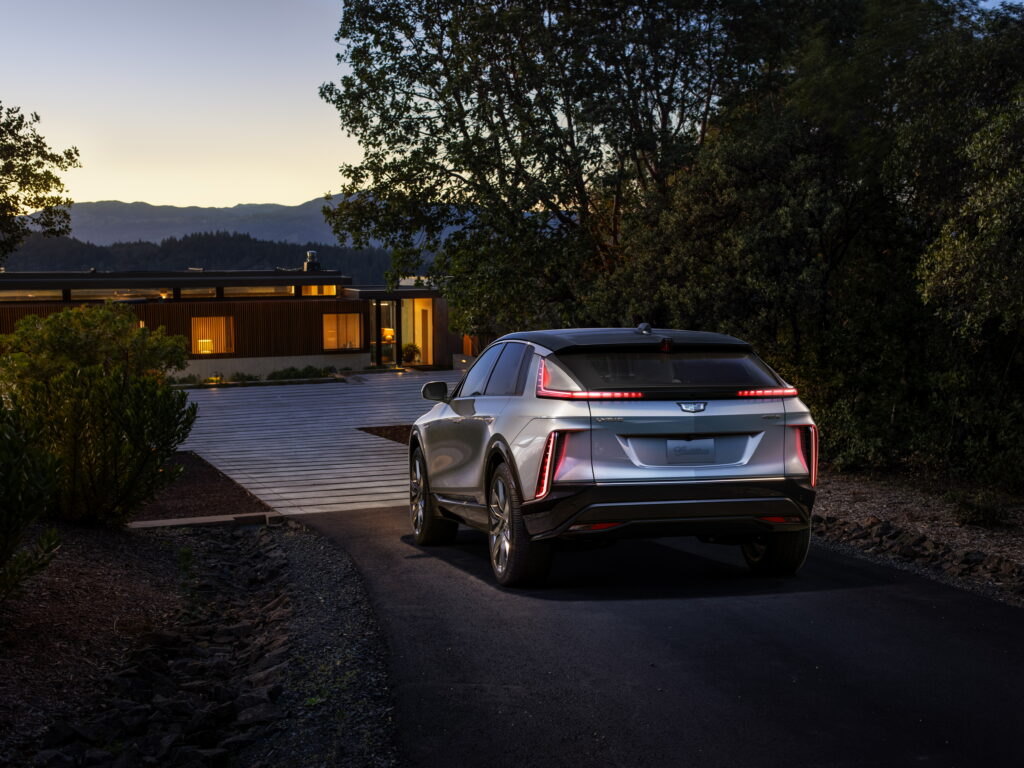
Range: 312 miles
Price: $64,185 with destination
Max charging speed: 190 kW (adding 195 miles of range in 30 minutes)
0-60 mph (fun factor): 6.4 seconds
Federal EV tax credit qualification: No, credits were exhausted. Learn about EV incentives here.
See our full review of the Cadillac Lyriq here.
See the latest EV availability and wait times for EVERY model
There are now three electric pickup trucks on American roads, but buying one is easier said than done. Everyone wants one, and wait lists extend months and in some cases, years. We’ve decided to include electric trucks that are not yet available for purchase, so long as specs have been released and reservations or orders can be placed today.
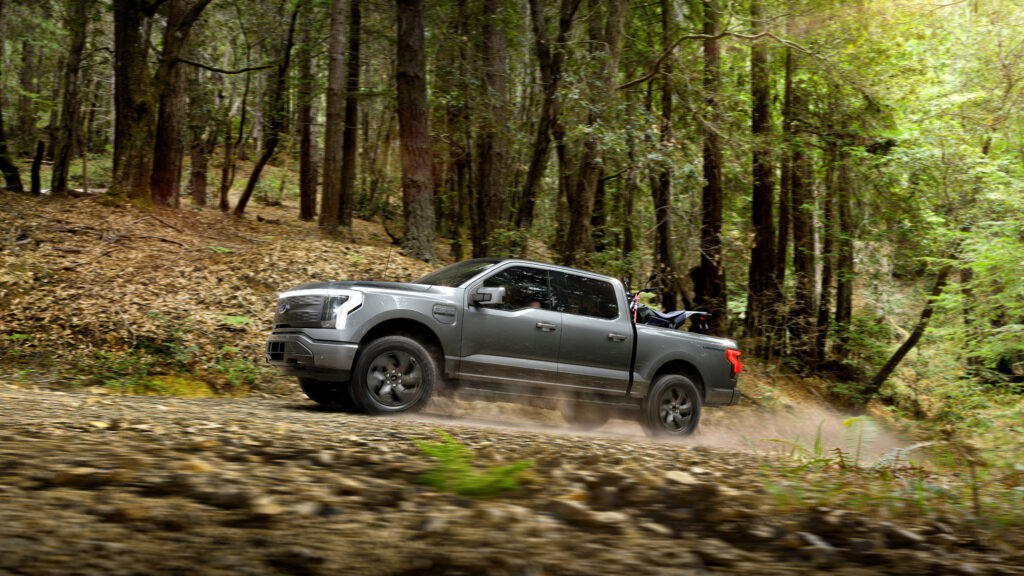
Range: 320 miles
Price: $72,474
Max charging speed: 130 kW (15-80% in 40 minutes)
0-60 mph (fun factor): estimated 4.5 seconds
Federal EV tax credit qualification: Yes, learn more about EV incentives here.
See our full review of the F-150 Lightning here.
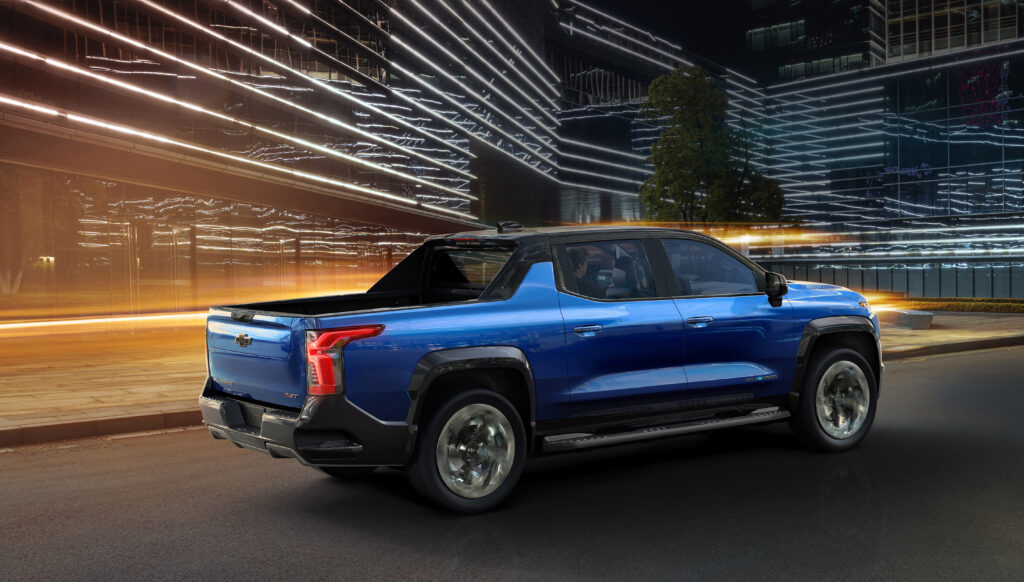
Range: Estimated 400 miles
Price: $42,000 – $100,000+
Max charging speed: 350 kW (adding 100 miles of range in 10 minutes)
0-60 mph (fun factor): N/A
Federal EV tax credit qualification: No, credits were exhausted. Learn about EV incentives here.
See our full review of the Silverado EV here.
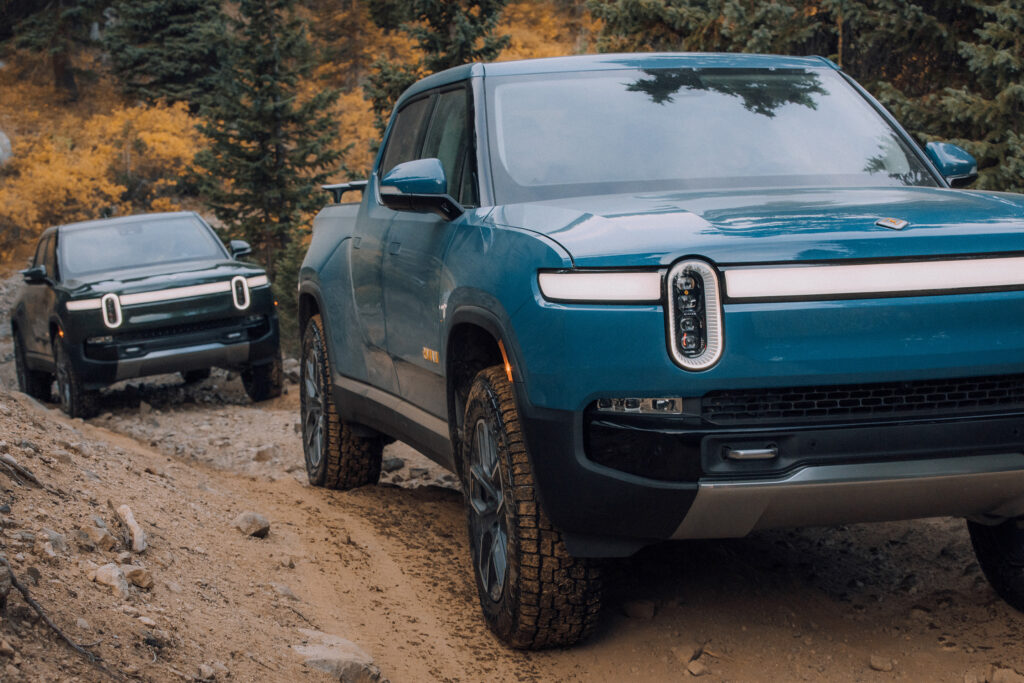
Range: 314 miles
Price: $80,000 – $100,000+
Max charging speed: 220 kW (10-80% in 40 minutes)
0-60 mph (fun factor): 3.0 seconds
Federal EV tax credit qualification: Yes, learn more about EV incentives here.
Learn more about Rivian’s R1T and R1S full-size SUV.
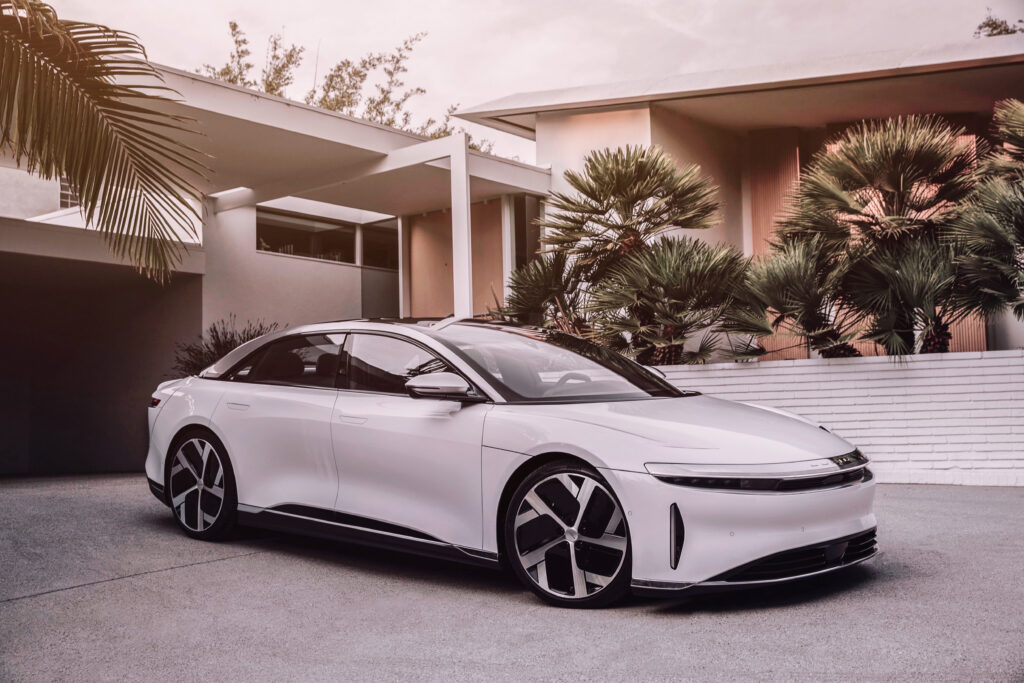
Range: 516 miles
Price: $139,000
Max charging speed: 300 kW (adding 300 miles of range in 20 minutes)
0-60 mph (fun factor): 2.6 seconds
Federal EV tax credit qualification: Yes, learn more about EV incentives here.
See our full review of the Lucid Air here.
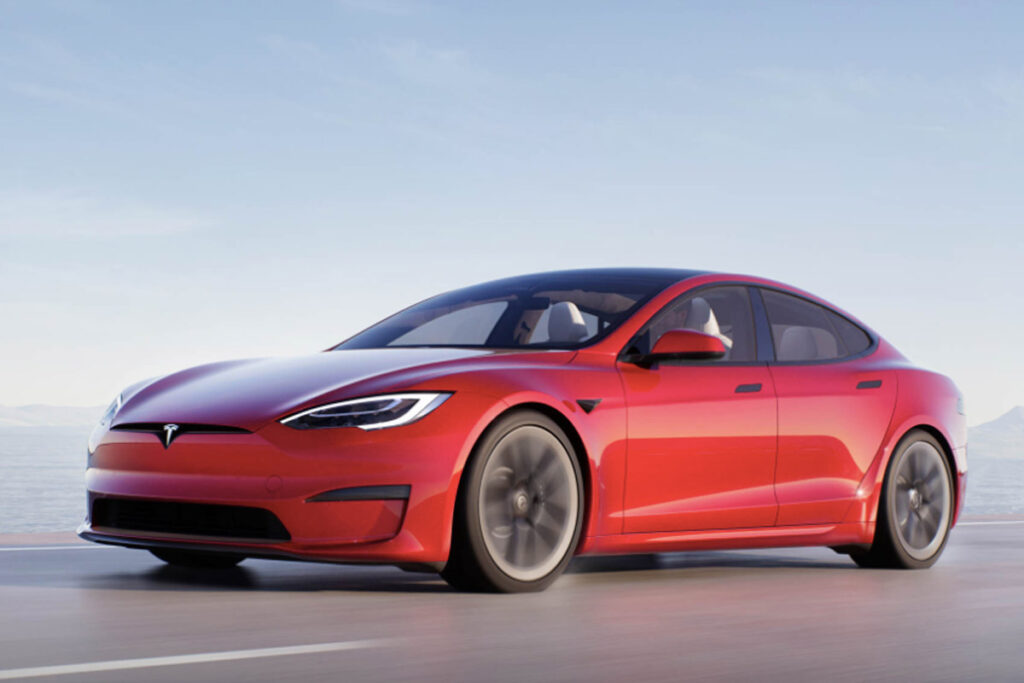
Range: 405 miles
Price: $101,990
Max charging speed: 250 kW (adding 200 miles of range in 15 minutes)
0-60 mph (fun factor): 3.1 seconds
Federal EV tax credit qualification: No, credits were exhausted. Learn about EV incentives here.
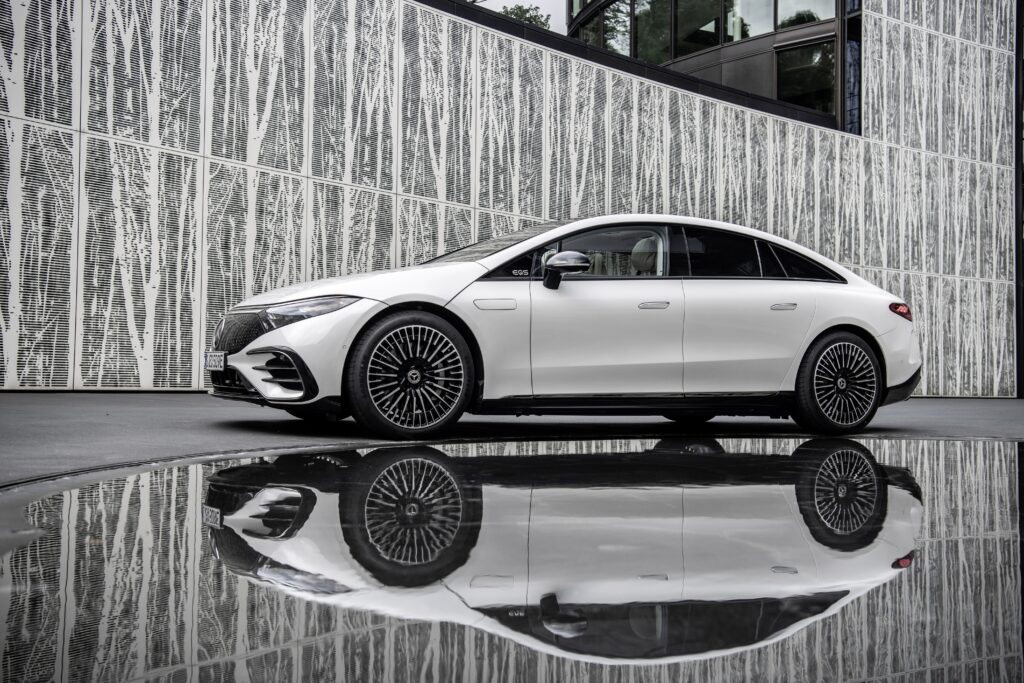
Range: 350 miles
Price: $139,000
Max charging speed: 200 kW (adding 200 miles of range in 20 minutes)
0-60 mph (fun factor): 5.5 seconds
Federal EV tax credit qualification: Yes, learn more about EV incentives here.
See our full review of the Mercedes EQS here.
What does the future hold? Not necessarily more range, surprisingly. Many auto analysts expect range for relatively affordable EVs to settle in around the 250-350 mile range. Why? Battery shortages loom on the horizon. Raw materials are in high demand, and there are only so many places on Earth to get lithium, cobalt and other materials.
Should you buy an EV now or wait? If you can find what you want for MSRP or very close to it, it just might be the right time to buy or lease. All signs point towards higher EV prices for 2023 and 2024 model years.


Electric vehicles are far from cheap, but many 2022 EVs come with free charging incentives that sweeten the deal. If you travel America’s interstates often, you’ll want to check out these free charging incentives. It adds up quickly!
The new Audi Q4 e-tron includes 250kWh of complimentary charging at Electrify America. Audi e-tron GT buyers get three years of free charging at Electrify America. With an EPA-rated range of 241 miles with a 77 kilowatt-hour battery pack, you’ll be good to go for plenty of charging stops. The Q4 e-tron will take about 40 minutes to charge from 10% to 80%. The much pricier e-tron GT can do the same in as little as 22 minutes.
The 2022 BMW iX SUV and i4 electric sedan will come with two years of 30-minute complimentary charging sessions at Electrify America charging stations. Depending on how much you travel, that could save you a few thousand dollars in public charging costs!
This is a better deal than it sounds. Level 2 home charging is not cheap to install, unless you’re lucky enough to live where incentives abound. Chevrolet will cover standard installation of a Level 2 charging outlet for customers who purchase or lease a 2022 Bolt EUV or Bolt EV. Learn more here. Here’s our review of the 2022 Bolt and Bolt EUV.
The 2023 Fisker Ocean is looking like it will be a popular electric crossover once it arrives. Fisker has partnered with Electrify America, however it’s not been shared if there will be a complimentary charging incentive for Ocean drivers. Regardless, it’s an amazing vehicle (on paper for now). We’re big fans of the innovative Fisker Flexee lease program.
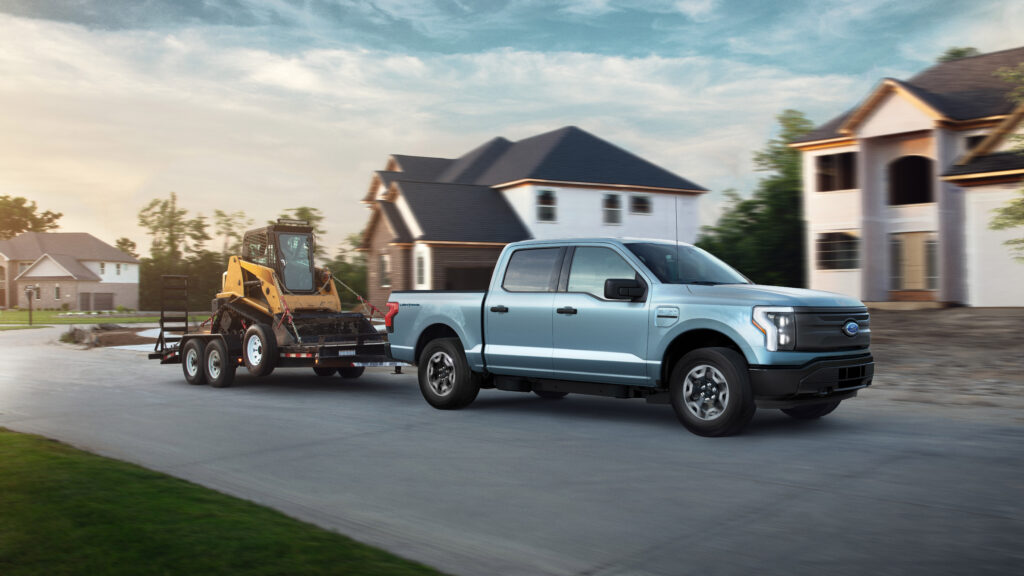
Yes, the truck we’ve all been waiting for does come with 250 kilowatt-hours of free charging at Electrify America. That’s equal to about two and a half fill-ups, or enough to drive about 700 to 800 miles in the F-150 Lightning. Once the incentive expires, expect a big charging session at Electrify America to cost about $25-35 in the F-150 Lightning. Learn more about the 2022 F-150 Lightning here.
Wondering which EVs are available in 2022? Here’s the full list, with pricing and wait times updated regularly.
Just like the F-150 Lightning, Mustang Mach-E drivers will get 250 kilowatt-hours of free charging at Electrify America. That’s enough to have about three or four free charging sessions on your first road trip. Here’s our review of the 2022 Mustang Mach-E, which by the way is one of the top-selling EVs in America (but still far behind Tesla).
The Genesis GV60 is the upscale sibling to my very own Hyundai IONIQ 5, but it comes with an even better charging incentive. Genesis GV60 buyers will get free 30-minute charging sessions for three years at Electrify America.
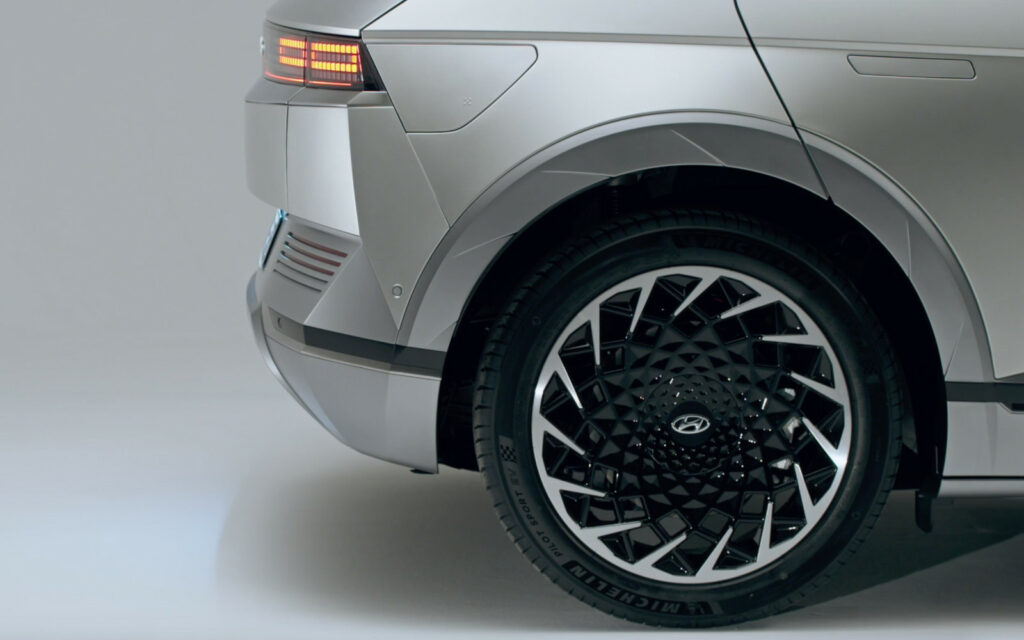
Hyundai and Kia have raced towards the top of the EV sales charts since launching their twin electric crossovers (some would argue they’re oversized hatchbacks). The Hyundai IONIQ 5 comes with two years of unlimited 30-minute charging sessions at Electrify America’s 800 stations nationwide. Electrify America is growing quickly, so it’s likely there are more than a few EA chargers along your most frequented routes.
I recently bought an all-wheel drive IONIQ 5 Limited, and I love it. Here’s how I bought one at MSRP (no markup!), plus all you ever wanted to know about the vehicle in this CarEdge review.
Kia decided to do things differently when setting up their partnership with Electrify America. EV6 owners 1,000 kilowatt-hours of free charging at Electrify America stations. The EA incentive expires after three years. With the efficiency of the Kia EV6, 1,000 kWh of free charging is likely to be good for about 3,500 miles of driving. Full review of the Kia EV6
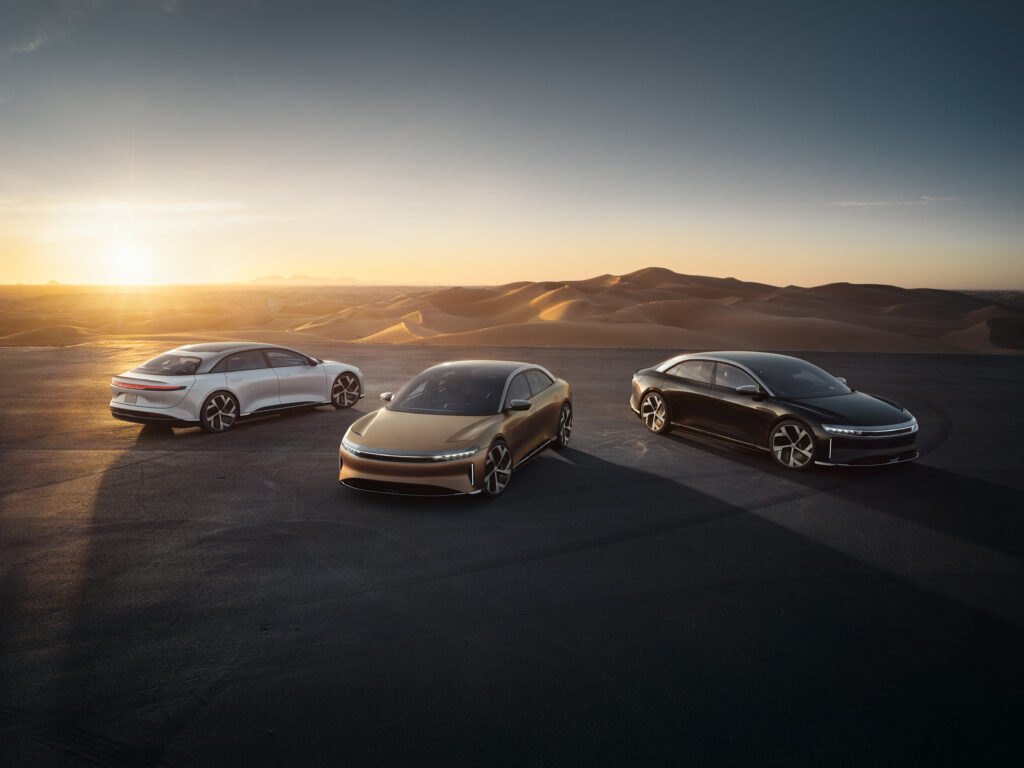
Lucid has EXTENDED their free charging partnership with Electrify America. Now, all Lucid customers who place their vehicle order before June 30, 2022 will get three years of free charging at Electrify America. Better get that wallet out! The Lucid Air starts at $77,400, however prices for top-level trims exceed $170,000. See the details here.
America’s first mass-market electric vehicle, the Nissan Leaf, is still a solid bargain in 2022.
(Check out the only cheap EVs available today)
Drivers purchasing or leasing a new Nissan LEAF receive $250 EVgo charging credits, which could last you a while with the Leaf’s 150 to 226 mile range. Here are the details from EVgo.
The first 10,000 customers who reserved a 2023 Nissan Ariya by January 31, 2022 get a $500 credit for EVgo’s growing network of charging stations. If you’re just now thinking about buying an Ariya, it’s a bit too late. Still, the Ariya is looking to be one of the nicest Nissan’s ever. Is it worth the price tag? Here’s what we think.

The Polestar 2 has several advantages over its competitors: it’s available now, starts under 50 grand, and features a no-haggle direct-to-consumer price. Another benefit of the Polestar 2 is a free charging incentive. The Polestar 2 comes with two years of free 30-minute charging sessions at Electrify America stations. That could save drivers thousands of dollars, depending on how many road trips you take.
Although it’s fantastic that Rivian is building its own charging network (like Tesla did), it’s a bit of a letdown for Rivian buyers who hoped to get a free charging incentive at Electrify America. The map below is where Rivian plans to have Adventure Network chargers, NOT where they currently are. All buyers of the Rivian R1T electric truck and R1S electric full-sized SUV will get one year of free charging on the Rivian Adventure Network.

The upside? This charging network will be specializing in rural destinations like National Parks, National Forests and the like. That will be transformative for charging in America.
Despite announcing a ‘partnership’ with America’s third-largest charging network EVgo, there’s no free charging incentive for now. As mentioned above, EVgo has 800 public fast-charging locations and 1,200 Level 2 charging stalls spanning 68 metropolitan areas and 35 states.
Although we’re a Subaru household (prior to taking ownership of our new IONIQ 5), the Solterra EV’s range, charging speed and price are a real bummer. Here’s our full review of the 2023 Subaru Solterra.
Back in the early days of the Model S, Tesla did offer insanely good free charging incentives on its young Supercharger network. From 2012 to 2018, some Tesla vehicles had free charging for life. If you’re looking for free charging or generous federal EV incentives, you’ll have to shop elsewhere.
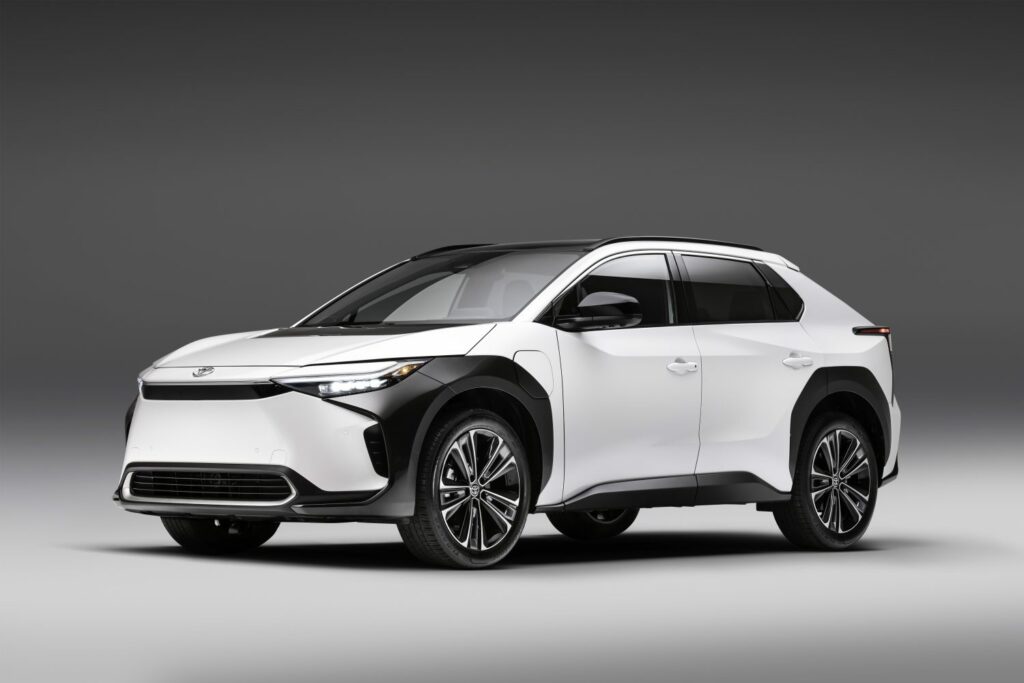
The all-new Toyota bZ4X electric crossover takes an hour to charge (at a ‘fast’ charger), has merely okay range, and isn’t all that affordable, but at least you get one year of free charging at EVgo’s network of chargers. EVgo has 800 public fast-charging locations and 1,200 Level 2 charging stalls in 35 states. Here’s why we aren’t fans of the bZ4X. Just buy a RAV4 Prime! That’s probably what Toyota wants you to do anyway.
The ID.4 has one of the best free charging incentives available today. Although the 2021 model year’s offer of three years of UNLIMITED free charging has ended, the 2022 Volkswagen ID.4 includes three years of free 30-minute charging sessions at Electrify America stations. With the 2022 model’s quicker charging rate and improved charging curve, this should be enough for most sessions to be free. Rarely will ID.4 drivers need to stay plugged in for more than 30 minutes at a DC fast charger. Full review of the VW ID.4
Buyers of the C40 Recharge and XC40 Recharge get 250 kilowatt-hours of free charging at Electrify America. But that’s not all: Volvo is also enticing drivers with a year of free access to Electrify America’s Pass+ membership, which offers charging at a discounted rate. The Pass+ membership offers charging at about 30% lower rates than using the network as a guest, but membership normally costs $4 per month.
Making the switch to an electric vehicle would be a no-brainer if they weren’t so darn expensive. It’s hard to find a cheap EV, but a few are out there. For many, free charging incentives are compelling enough to close the deal. Personally, I’ve saved a few hundred dollars in charging costs over the first few months of EV ownership by using my IONIQ 5’s Electrify America incentive.
This begs the question: would you rather have faster charging times, or longer range? Does stopping for 15 minutes every 200 miles sound better than stopping for 45 minutes every 300? Let us know what you think the future of EV charging should look like. One thing is for sure, EVs are coming to roads near you.

We hear it all the time: electric cars save you money. Electricity is cheaper than gas, EVs require less maintenance, and incentives abound. However, there’s no hiding the fact that electric vehicles are expensive, especially the models with the best range, performance and charge rates. To shed light on the reality of electric vehicle savings, we dug deep into the data. How long does it take to break even when buying an EV? We were surprised with what we found.

The X4 is one of the most direct competitors to the 2022 Tesla Model Y, the best selling electric vehicle in America. Although Tesla models no longer qualify for the federal EV tax credit, the cost of the BMW X4 and high fuel consumption make this an interesting comparison.
| Model | MSRP | Price Difference | Incentives | Fuel Economy | Range | Time to Refuel | Cost to Refuel ($5.00/gal or $0.14 per kWh) | Annual Fuel Cost (15,000 miles) | Average Annual Maintenance Cost | Time to Break Even |
|---|---|---|---|---|---|---|---|---|---|---|
| BMW X4 xDrive30i | $51,800 | -- | 24 MPG | 413 miles | 5 min | $86.00 | $3123 | $228 | ||
| Tesla Model Y Long Range | $62,990 | +$11,190 | State and local only | 3.8 mi/kWh (125 MPGe) | 330 miles | 20 to 30 min | $10.50 | $477 | $77 | 4 years |
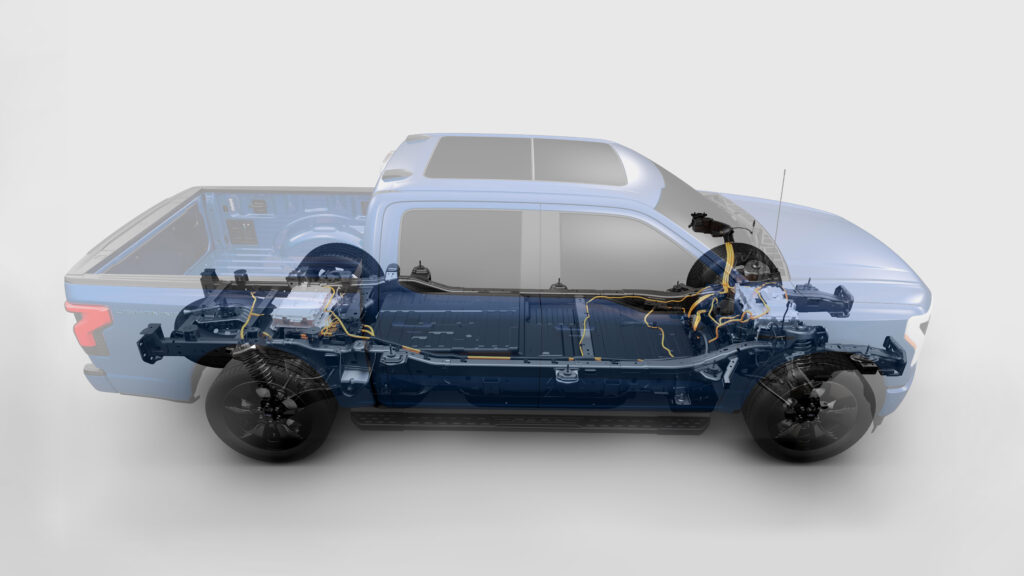
Pickup trucks get the worst fuel economy. It’s just a matter of physics; the shape of a truck is not aerodynamic, and they’re often heavy. The F-150 Lightning weighs 35% more than the gas-powered F-150. So you would think that the time to break even would be shorter when buying an electric truck over the combustion equivalent.
This side-by-side comparison highlights the importance of price parity for EVs. When EVs are similarly priced to ICE vehicles, the cost of ownership savings are crystal clear. But what about when the electric version costs over $25,000 more out the door? Have a look for yourself.
| Model | MSRP | Price Difference | Incentives | Fuel Economy | Range | Time to Refuel | Cost to Refuel ($5.00/gal or $0.14 per kWh) | Annual Fuel Cost (15,000 miles) | Average Annual Maintenance Cost | Time to Break Even |
|---|---|---|---|---|---|---|---|---|---|---|
| Ford F-150 Platinum 4WD 3.5 | $62,070 | -- | 20 MPG | 520 miles | 5 min | $130.00 | $3750 | $228 | ||
| Ford F-150 Lightning Platinum | $90,874 | +$28,804 | Fed, state and local | 2.1 mi/kWh (70 MPGe) | 320 miles | 45 min | $18.34 | $860 | $77 | 9.5 yrs (7 yrs with tax credit) |
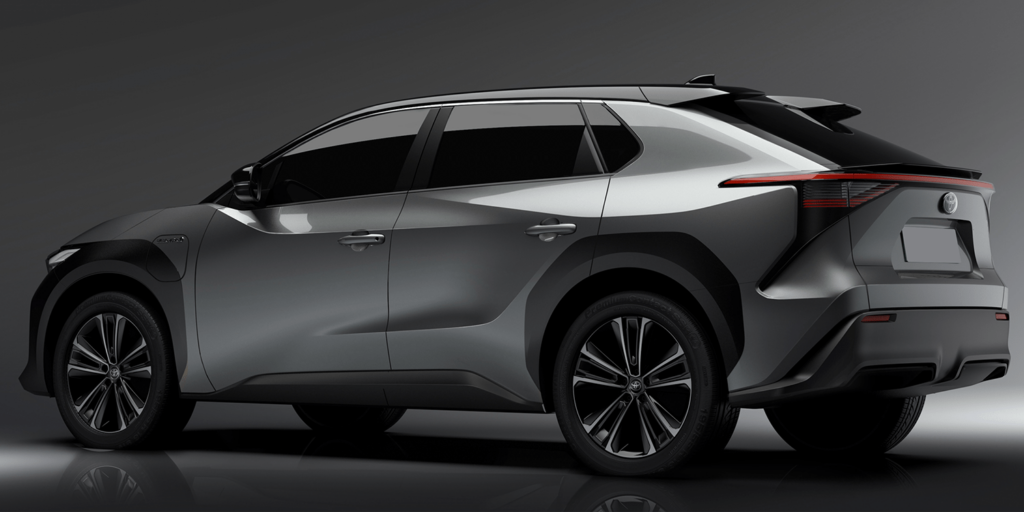
Toyota sells nearly half a million RAV4s every year. Will things change now that Toyota has launched its first fully-electric vehicle? The all-new bZ4X lacks the range and charging speed to compete with the best in 2022’s electric segment, but how does it stack up to the popular RAV4 hybrid? How long would it take to break even when paying a premium for the electric bZ4X?
| Model | MSRP | Price Difference | Incentives | Fuel Economy | Range | Time to Refuel | Cost to Refuel ($5.00/gal or $0.14 per kWh) | Annual Fuel Cost (15,000 miles) | Average Annual Maintenance Cost | Time to Break Even |
|---|---|---|---|---|---|---|---|---|---|---|
| Toyota RAV4 XLE Hybrid | $30,545 | -- | 40 MPG | 580 miles | 5 min | $72.50 | $1,875 | $228 | ||
| Toyota bZ4X XLE FWD | $42,000 | +$11,455 | Fed, state and local | 3.5 mi/kWh (119 MPGe) | 252 miles | 1 hour | $10.19 | $606 | $77 | 8 years (2.7 yrs with tax credit) |
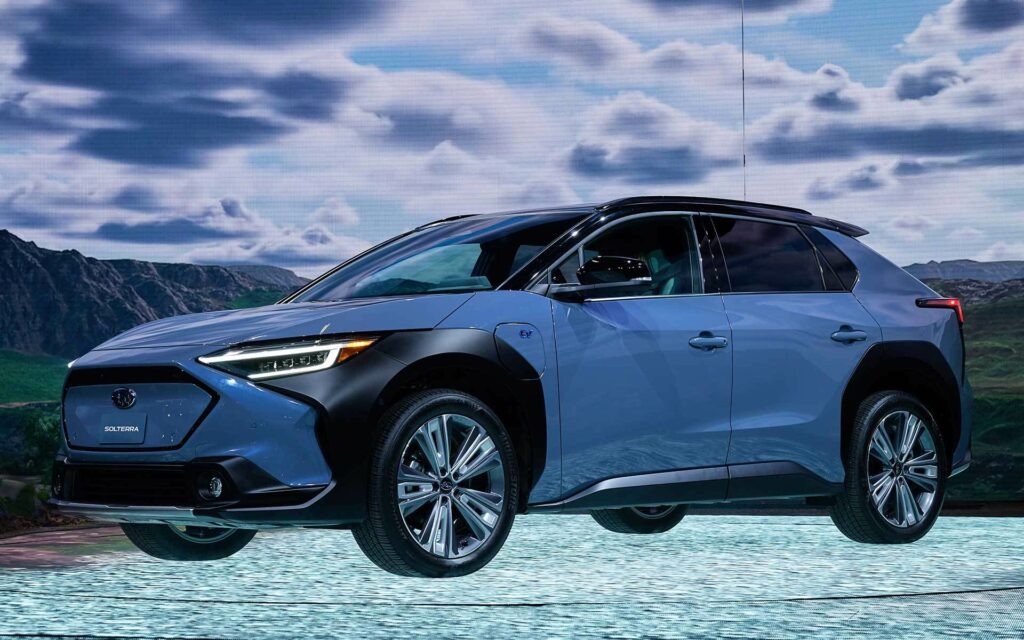
Subaru’s first EV is built on the same electric platform as the new Toyota bZ4X. Subaru is known for being Earth-friendly, but is the new Solterra EV friendly to your wallet? With range and charging figures more akin to 2015’s standards than today’s best EVs, the Subaru Solterra is off-road capable, but a tough sell for those who truly venture off the beaten path.
| Model | MSRP | Price Difference | Incentives | Fuel Economy | Range | Time to Refuel | Cost to Refuel ($5.00/gal or $0.14 per kWh) | Annual Fuel Cost (15,000 miles) | Annual Maintenance Cost | Time to Break Even |
|---|---|---|---|---|---|---|---|---|---|---|
| Subaru Forester base | $25,395 | -- | 29 MPG | 481 miles | 5 min | $83.00 | $2,588 | $228 | ||
| Subaru Solterra Premium | $46,220 | +$20,825 | Fed, state and local | 3.1 mi/kWh (104 MPGe) | 228 miles | 1 hour | $9.97 | $677 | $77 | 10 years (6.5 yrs with tax credit) |
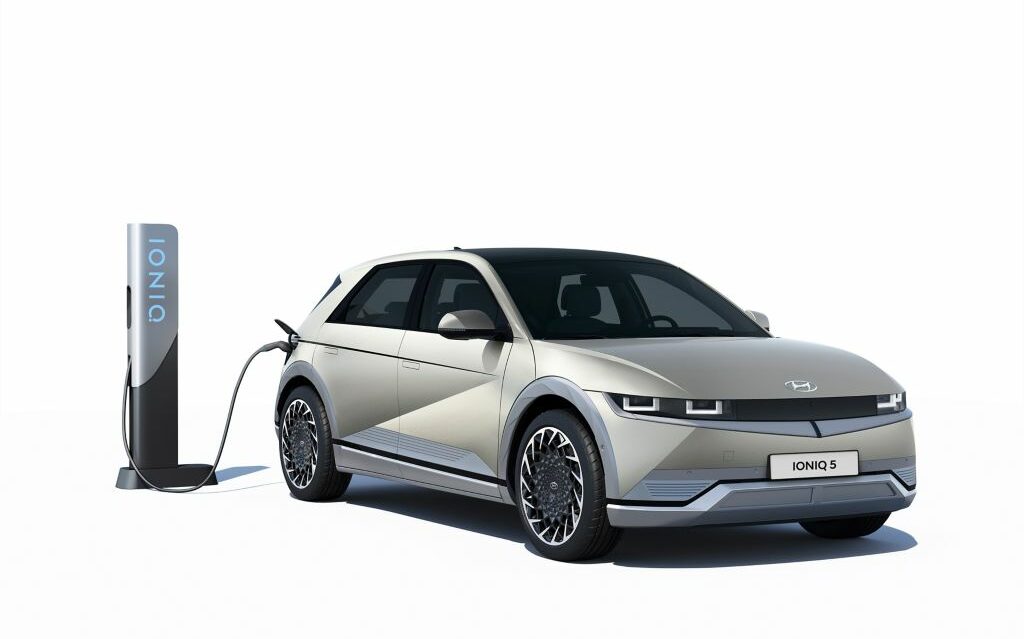
The Hyundai IONIQ 5 won big at the 2022 World Car Awards, but is it a winner for your wallet? It all depends on how much you drive, and how long you plan to keep the vehicle. The Hyundai Santa Fe just received a total makeover, and its price remains much lower than the IONIQ 5’s. Still, EVs are super efficient and electricity is cheap. Just how long would it take to break even when buying an IONIQ 5 EV instead of the more affordable Santa Fe crossover?
Disclaimer: I own a Hyundai IONIQ 5 Limited AWD, and it’s awesome.
| Model | MSRP | Price Difference | Incentives | Fuel Economy | Range | Time to Refuel | Cost to Refuel ($5.00/gal or $0.14 per kWh) | Annual Fuel Cost (15,000 miles) | Average Annual Maintenance Cost | Time to Break Even |
|---|---|---|---|---|---|---|---|---|---|---|
| Hyundai Santa Fe SEL | $27,875 | -- | 26 MPG | 489 miles | 5 min | $94.00 | $2,883 | $228 | ||
| Hyundai IONIQ 5 SEL RWD | $45,900 | +$18,005 | Fed, state and local | 3.4 mi/kWh (114 MPGe) | 303 miles | 20 to 30 min | $10.15 | $502 | $77 | 7 years (4.2 yrs with tax credit) |
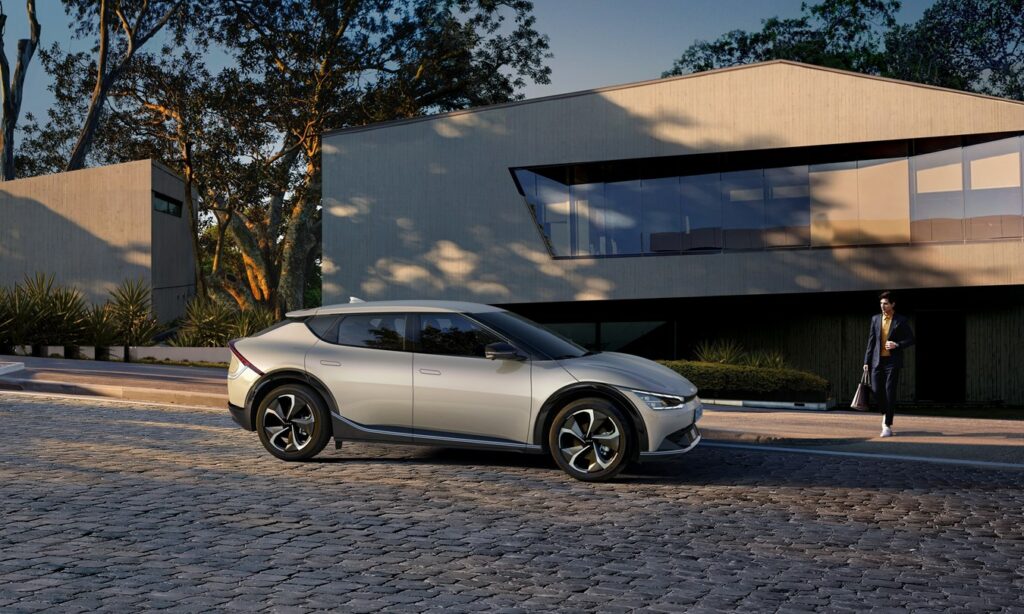
In many states and localities, thousands of dollars of additional incentives are available. Colorado, Connecticut, Delaware, Maryland and California are just some of the states with very generous EV incentives. State and local incentives can reduce the time to break even considerably. For example, in Delaware, buyers of the Hyundai IONIQ 5 will break even versus the Santa Fe in just 3.5 years with the federal EV tax credit and state rebates factored in.
Conversely, for car buyers who can’t take advantage of the federal EV tax credit or any state incentives, it will take many more years to reap the full savings of switching to an electric vehicle. In the case of the new Ford F-150 Lightning, it could take up to 8 years to break even without any incentives, assuming 15,000 miles per year of driving.
Check this out >>> The North Carolina Clean Energy Technology Center’s DSIRE database is the BEST one-stop resource for all EV incentives. Plus, you’ll see what solar power incentives are available in your area too.
The difference between driving 10,000 miles per year and 20,000 miles per year is massive when it comes to realizing the savings of driving an EV. The average American driver travels about 14,000 miles per year in their vehicle. Simply put, long-distance commuters, frequent travelers and fleet operators will see the greatest cost savings of going electric.
With the 2023 Ford F-150 Lightning, a driver who travels 15,000 miles per year and can take advantage of the full $7,500 federal EV tax credit should expect to break even versus a combustion F-150 in 7 years. However, if they drive 25,000 miles per year, the break even period narrows to just 4 years. After that, they will be saving roughly $4,000 every year in fuel and maintenance costs. Clearly, EVs make more sense as a long-term purchase.
The maintenance figures included in this cost comparison is sourced from We Predict, a Michigan-based data analysis company. They dug deep into automotive maintenance data and found that during the first three years of vehicle ownership, the average annual maintenance for an electric vehicle is just $77. And based on personal experience, that’s likely for new tires (EVs are MUCH heavier).
During the same period, combustion vehicles average $228 in annual maintenance, with most of the costs in the first few years going towards oil changes and the like.
We may be underestimating the maintenance savings associated with going electric when comparing luxury brands. For example, BMW is notorious for costly maintenance. Opting for a Tesla Model Y over a BMW will likely result in even greater maintenance savings, and therefore a reduced break-even period.
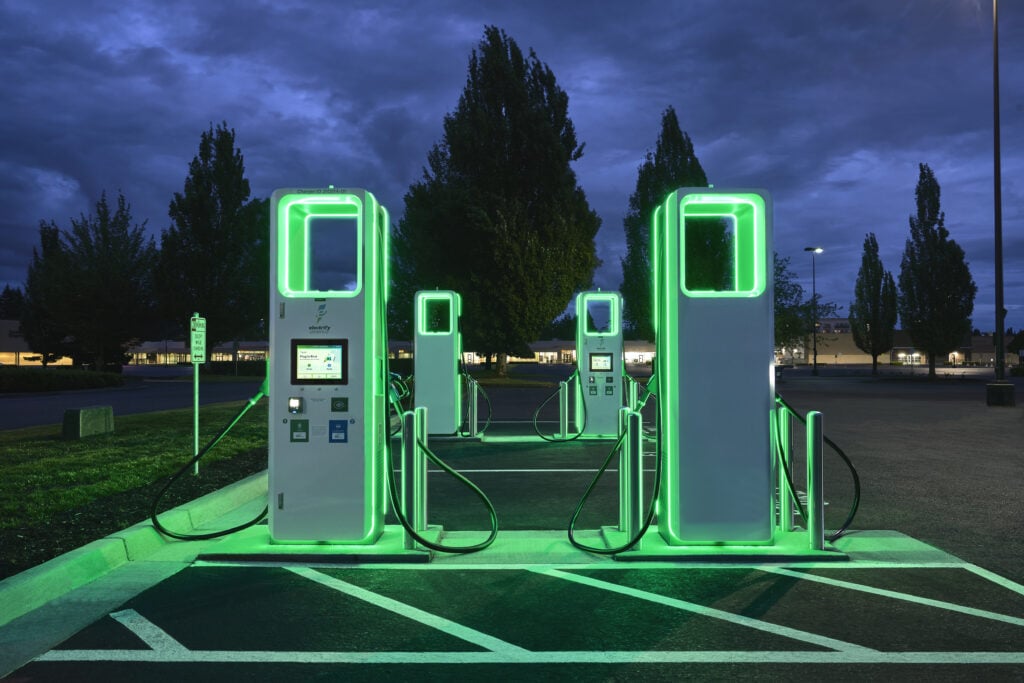
As of early June 2022, the average gas price in the United States is $4.87 per gallon. In California, it’s $6.34. Nevada, Hawaii, Washington, Oregon and Illinois all have gas prices much higher than the national average. In these states, EV drivers will see even greater fuel savings.
Let’s take a closer look at an example of someone purchasing a Hyundai IONIQ 5 in California. We’ll assume that the consumer qualifies for the full $7,500 EV tax credit and the $2,500 state rebate for a zero-emissions vehicle. They drive 15,000 miles per year. At gas prices of $6.34 per gallon, the break even point for the IONIQ 5 versus the Hyundai Santa Fe arrives in just 2.5 years, versus 4 years for the rest of the nation. That figure includes the 59% higher residential electricity rates in California.
What can we learn from this EV cost of ownership comparison? The specifics of your situation matter.
These are the most important questions to ask when deciding whether or not it makes sense to buy an EV in 2022. Have questions? Let us know in the comments, or better yet join the CarEdge family at caredge.kinsta.cloud/community. You can also reach me at [email protected]. We’d love to hear from you.
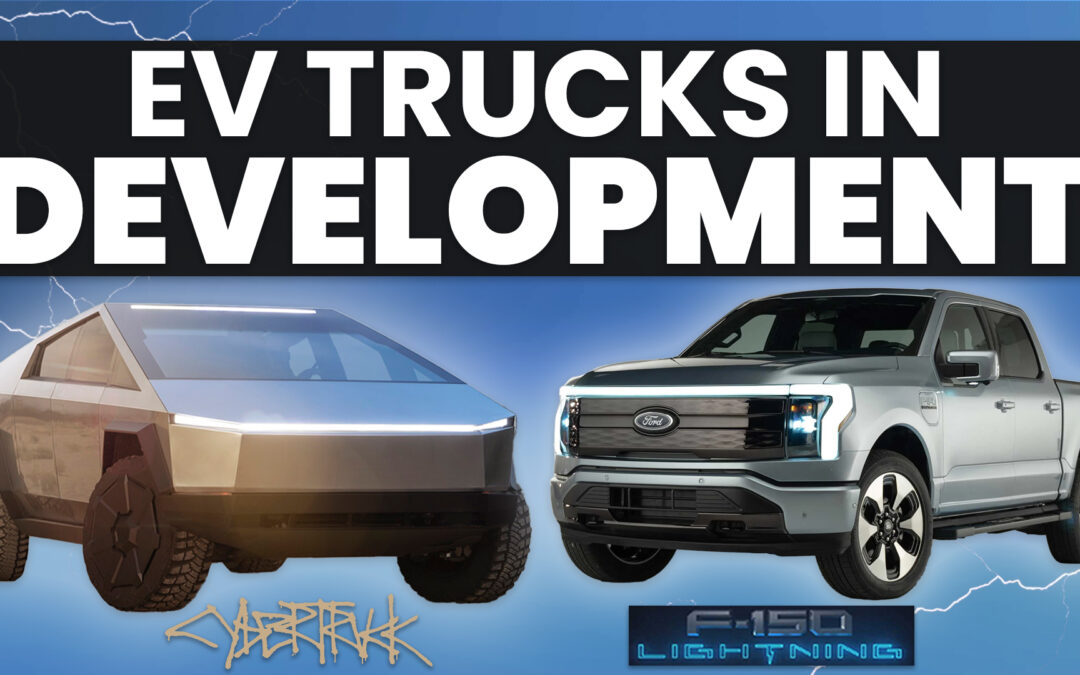
Electric trucks are few and far between on highways, but they’re all the rage online. There are fewer than 3,000 electric trucks on the road today, but at least 1.5 million reservations are in the books for upcoming electric truck models. Will trucks ever catch up to crossovers in the electrification of the auto industry? With how many models are in the development pipeline, it will be interesting to find out. Let’s take a look at every electric truck on the way, and the few you might catch a glimpse of in 2022.

Introduced: Late 2021
Range: 314 miles
Fuel economy: 71 MPGe
Cost to charge 0 – 100% at home: $19
Price: $78,975 – $121,690
“It’s bigger than a Ford Ranger, smaller than a F-150, and a whole lot more expensive.”
The 2022 Rivian R1T is the most common electric truck on the road today, but that doesn’t mean it will be easy to find one. About 2,000 have been sold as of spring 2022. As is often the case, supply shortages (and inflation) have put a damper on the much-anticipated rollout of Rivian’s first model.
Nevertheless, it’s a very capable truck. The R1T can tow more than 11,000 pounds and the pickup offers a payload capacity of 1760 pounds. And it’s fast, with a 0-60 time of 3.3 seconds. It’s a rugged, outdoorsy-themed truck for those who use their pickup for more play than work. If you’re in the market for one, get in line. If you’re lucky (and have a deep wallet), you just might take delivery of one by the end of 2023. Rivian prices recently jumped by $10,000 – $20,000, so don’t expect a Rivian for the original price of $69,000.
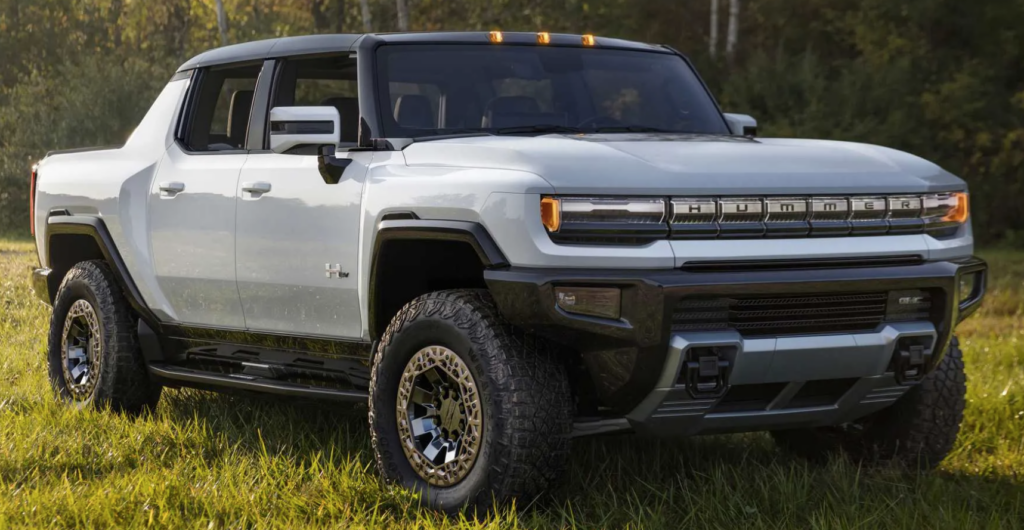
Introduced: Late 2021
Range: 329 miles
Fuel economy: 47 MPGe
Cost to charge 0 – 100% at home: $30
Price: $80,000 – $110,000+
“American excess at its finest….. and least efficient.”
If you would like a 9,000-pound, crab-walking mammoth of a truck that can seemingly overcome physics to reach 60 miles per hour in three seconds, General Motors has you covered. The revived Hummer is a large luxury truck meant to turn heads more than it’s meant to haul stuff to the worksite.
The Hummer EV’s #1 party trick is the crab-walk. That’s when the truck turns using all four weeks, allowing it to slide through traffic. The EPA-rated range of 329 miles is a bit misleading. It has a MASSIVE 212 kilowatt-hour battery. That’s triple the capacity of most electric crossovers! While technically it starts around $80,000, used ones are already selling for a quarter of a million dollars.

Introduced: Late 2022
Range: 230 – 300 miles
Fuel economy: 68 MPGe
Cost to charge 0 – 100% at home: $14 – $20
Price: $39,974 – $90,874
“This will be the first mass-produced electric truck on the market, but we’re bracing for the dealer markups.”
We recently detailed all we know about the upcoming electric F-150 in a special CarEdge preview. It turns out that truck fans are REALLY looking forward to the Lightning. The question remains, can Ford make enough of them?
Here’s What Stands Out With the F-150 Lightning:
Ford has 200,000 reservations in the books for the F-150 Lightning, so new orders can expect a 2024 delivery. If you’re patient, this just might be worth the wait.
Here’s everything we know about the Ford F-150 Lightning.
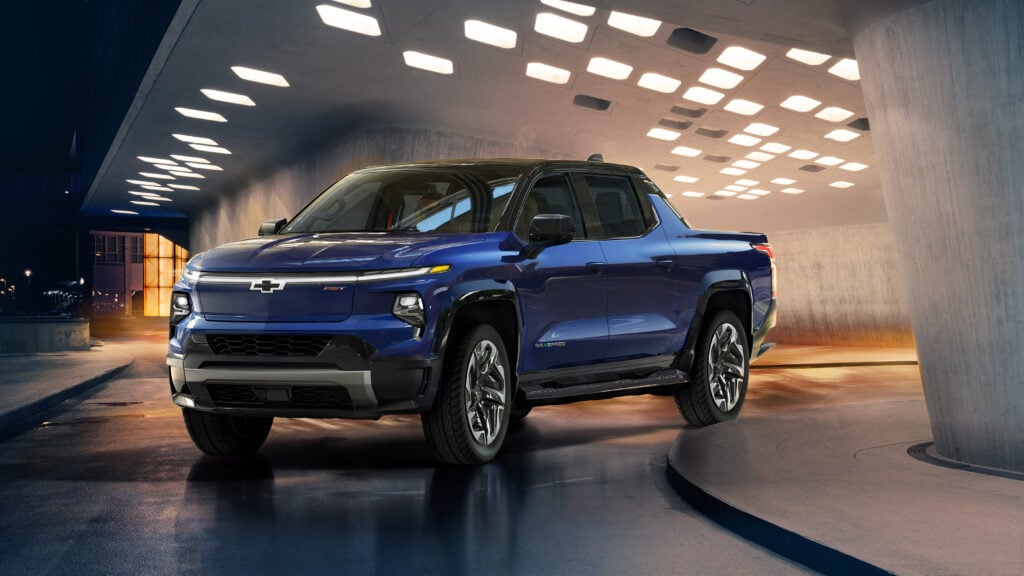
Introduced: Spring 2023
Range: Up to 400 miles (depending on battery size/trim)
Cost to charge 0 – 100% at home: $28
Price: $39,900 – $80,000+
“It’s the direct competitor to the F-150 Lightning, but it will charge a LOT faster.”
When Ford made such a big deal with the unveiling of the F-150 Lightning, we all knew General Motors would be cooking up something special. The Chevrolet Silverado EV was unveiled at last, and the specs and looks have exceeded expectations. Chevy claims it has faster charging, more power, and more range than the Ford.
It’s a flexible truck too, and one that’s definitely going to see some worksite use. The storage capacity of the 5-foot-11-inch bed can be extended to 9 feet with the ’available’ Multi-Flex Midgate.
GM says that the new Silverado is basically a rolling generator, if you buy the required accessories. “When combined with the available accessory power bar, the Silverado EV’s PowerBase charging system offers up to 10 outlets, to provide a total of 10.2kW of all-electric power for countless worksite or recreational needs, including powering your home, with the required equipment.” It can even charge other electric vehicles!
Learn more about the Chevrolet Silverado EV in our in-depth analysis.
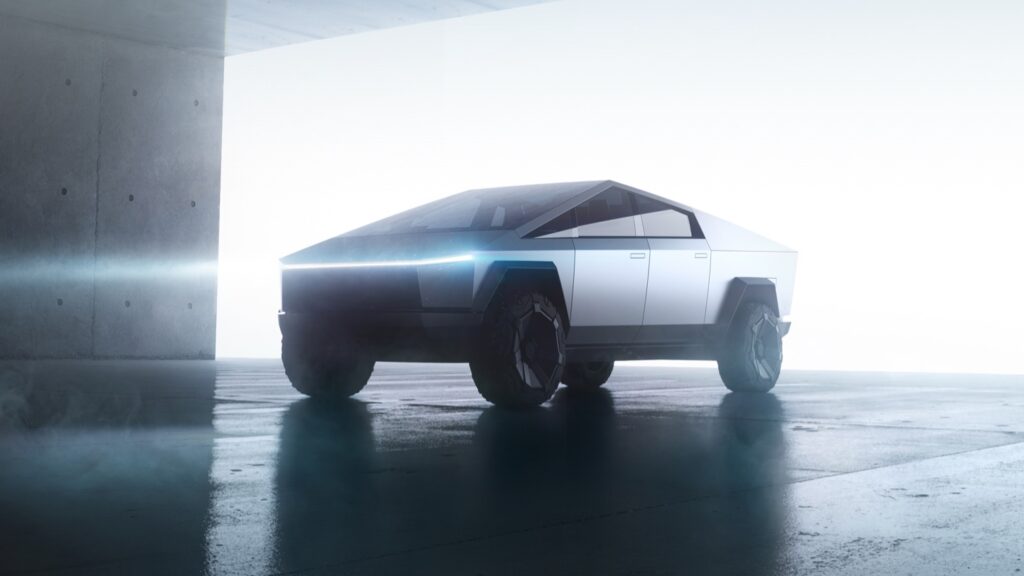
Introduced: 2023
Range: Up to 400 miles
Price: Unavailable
“Did someone make a truck in Minecraft?!”
Ever since Tesla pulled the curtains back in November 2019, the world has divided into two camps: those who adore the Cybertruck’s angular, Mars-ready looks, and those who abhor it. No matter what your opinion is, it’s still just an idea for now. Tesla has repeatedly pushed back its arrival, and now says that 2023 will be the start of production.
The Cybertruck will have 3,500 pounds of payload capacity, and can tow 14,000 pounds. Those specs are on another level for sure. It’s also a performance-oriented truck, with a 0-60 time of 2.9 seconds. Pricing had previously been announced to start at $40,000 for rear-wheel drive base variants, but that was later removed from the Tesla website. We expect pricing to range from $55,000 to over $80,000, but it’s pure speculation at this point.
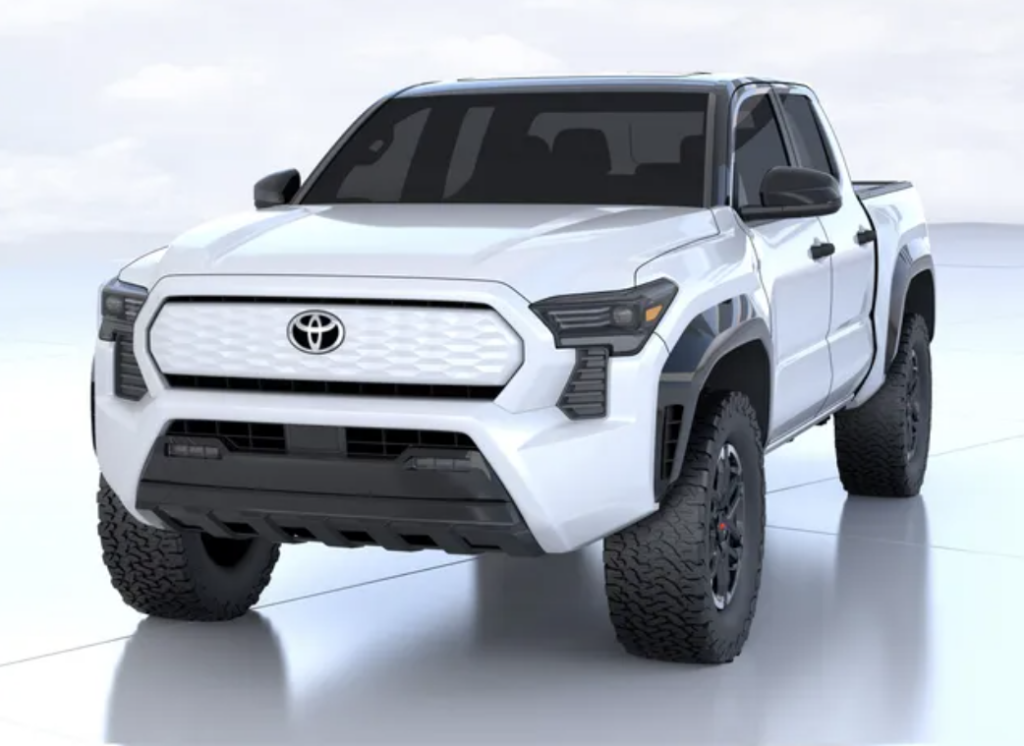
In late 2021, Toyota teased the above image of an electric truck. It closely resembles an electric Tacoma, which would be a dream come true for many Toyota fans. They haven’t said a word since, but we’ll update you with the latest once we know more.
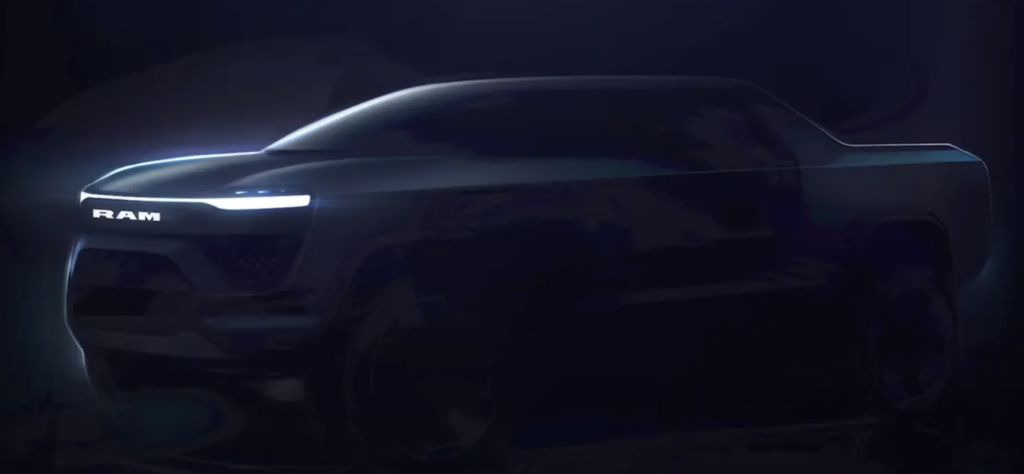
Stellantis has taken its sweet time getting into EVs. In 2024, the Ram 1500 electric truck will make a debut with a range of up to 500 miles and futuristic design cues. It will be capable of fast-charging, a quick 0-60 time, andthe latest tech from Stellantis.
The electric Ram 1500 will be built on the new STLA platform that is currently in development. More to come.
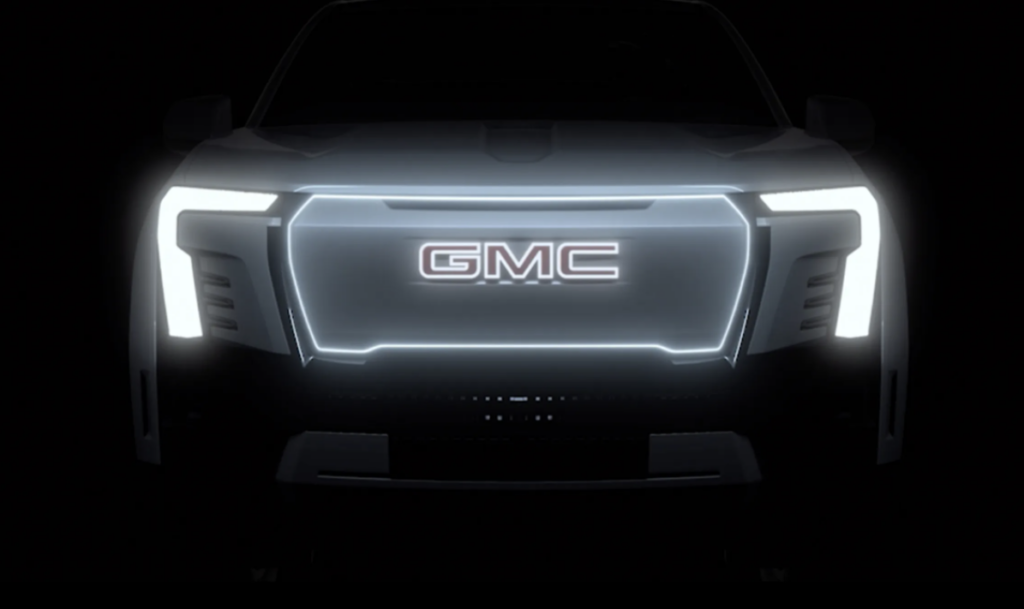
They say it’s coming, but we don’t know much yet. The electric Sierra will share the same powertrain engineering as the Silverado EV.
“Like the GMC Hummer EV, the electric Sierra will be purposefully built on the Ultium Platform with the premium materials and capability customers have come to expect from GMC trucks,” says GMC.
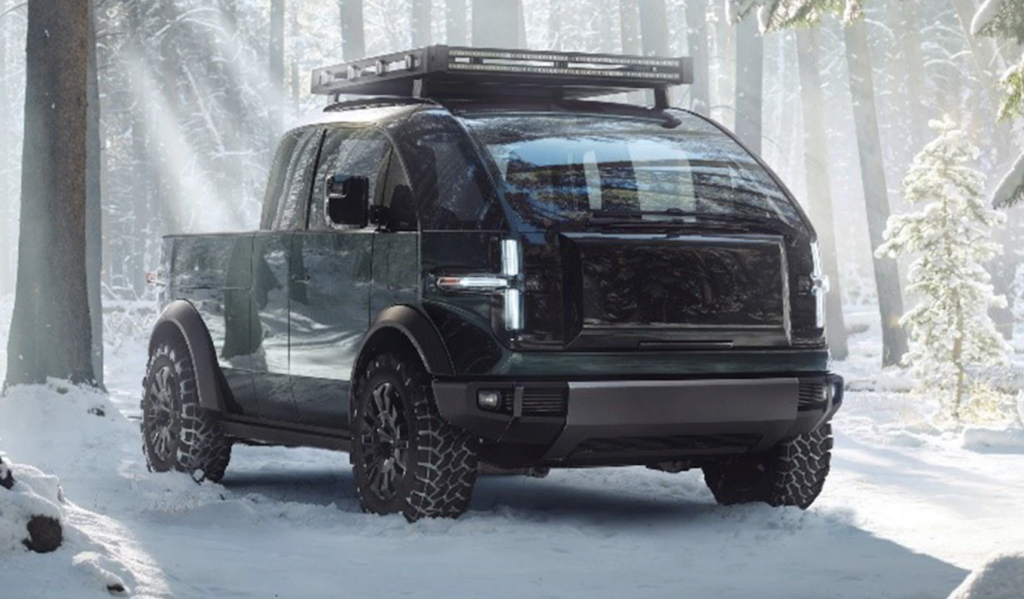
The Canoo ‘Pickup Truck’ has more in common with the Tesla Cybertruck that one might suspect. It’s weird-looking, has space-age ambitions, and has been repeatedly delayed. Canoo has undergone multiple leadership shakeups, and that has delayed the launch of Canoo’s first products by a few years (and counting).
The Canoo truck has a targeted payload capacity of 1,800 pounds, a 6’ 8” bed when extended, and about 500 horsepower. At least 200 miles of range are to be expected on a charge. Hopefully it turns out to be at least 250 miles considering the competition.
As odd and mysterious as the Canoo Pickup Truck is for now, the EV startup already scored a significant contract, at least symbolically. NASA selected Canoo to transport astronauts to the upcoming Artemis spaceships for missions to the moon in 2025.
With a bit of luck, the Canoo truck just might be available to reservation holders in 2023. Learn more about Canoo here.
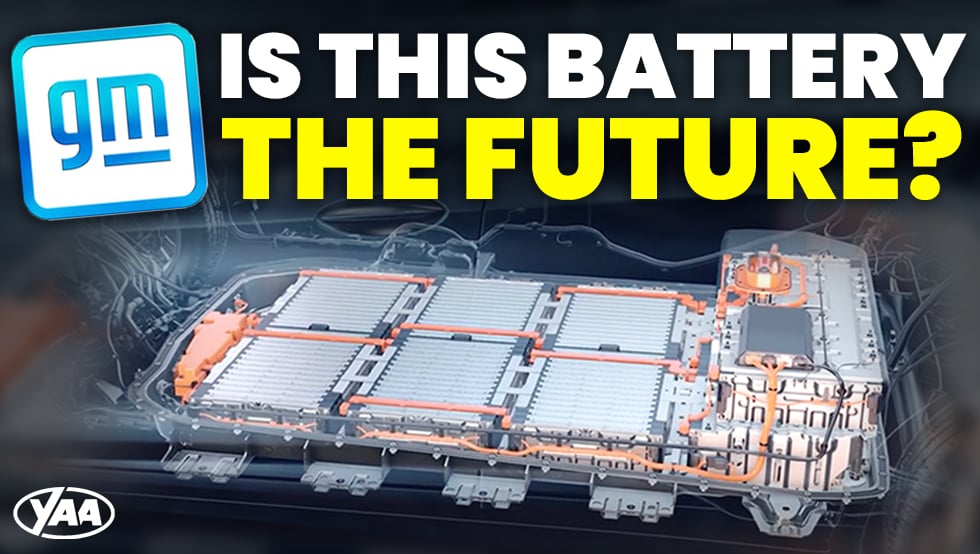
My very own Hyundai IONIQ 5 has a special trick up its sleeve. In fact, even Tesla can’t claim it. In 2022, very few electric cars are engineered with 800-volt architecture. While still an outlier, all signs point towards an auto industry heading in the direction of faster charging, better efficiency, and smaller battery sizes – all of which are unlocked by promising 800-volt electrical systems in EVs.
The mass adoption of electric vehicles largely depends on the ability to find real solutions for a few ownership challenges for today’s EV drivers:
Most electric vehicles in 2022 are built on 400-volt systems, but these systems have limits. Indeed, some automakers are quite happy with their 400-volt EV platforms. Tesla manages to find other ways of mastering efficiency and power delivery, and has not mentioned plans for a voltage upgrade. One BMW senior engineer called settling with a 400-volt platform the “best compromise”, but not everyone agrees.
800-volt systems can deliver double the power through the same current, or if desired, the same power through half the current. The result is roughly 50% faster charging for the same battery size. As a result, batteries can be made smaller and overall weight is reduced, increasing efficiency and ideally lowering the cost of the vehicle.
Would a car need a massive battery with a 500-mile range if it can charge a smaller battery that’s good for 250 miles in just 15 minutes? What is that smaller battery was A LOT cheaper?

In 2022, just a few electric vehicles use 800-volt systems for power delivery and charging.
Of particular interest is the different paths taken by Ford and GM for their upcoming electric trucks. The F-150 Lightning is built on 400-volt architecture, while the Chevrolet Silverado EV is jumping to 800-volt architecture, and the result is much faster charging speeds for the Chevy. Will this matter to consumers, or will brand loyalty win out?
Why doesn’t Tesla use 800-volt charging? We’re not sure, but clearly they’ve found success with their existing 400-volt architecture.

Fortunately, a whole host of solutions are uniting to offer a better way forward for EVs. And it’s not all about charging speeds. Solid-state batteries are finally approaching real-world usability following decades of research and development. For the better part of the last decade, $100 per kilowatt-hour was the affordability target for battery development. That goal was reached, but the latest raw material shortages are sending prices back up, and electric car prices have gone up accordingly. The U.S. Department of Energy thinks that $60 per kilowatt-hour is within reach, however it’s increasingly looking like solid-state batteries may offer the only path to such low-cost batteries.
Toyota says it will be the first to bring a solid-state battery into a production vehicle. In typical Toyota fashion, their solid-state battery will debut in a hybrid powertrain rather than a full battery-electric vehicle. It looks like the world will see what solid-state battery chemistry is capable of in 2025.
Faster charging, better range, and (hopefully) lower prices are promised time and time again with every new EV model announcement. 800-volt architecture and solid-state batteries are the headlining developments that automakers are working on behind the scenes. We didn’t even touch on new battery chemistries, manufacturing methods, and electric motor breakthroughs in the works. We’ll have to save that for another day, as there’s always something new to talk about in the EV space.
But the promise of faster charging and energy-dense batteries begs the question: would you take faster charging over more range? It’s looking like that will be the EV debate of the decade. What are your thoughts? Let us know in a comment or over at the CarEdge Community Forum. What matters most when you head out on a journey?